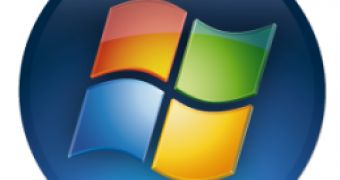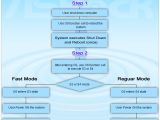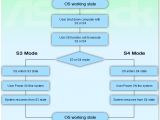One of Microsoft's focuses in terms of the Windows client's evolution is improving the startup performance. Moving onward, beyond Windows Vista, the software giant is optimizing the boot-process, in order to shave off precious seconds between the moment the user hits the On button and that in which the operating system becomes fully functional. However, Microsoft is yet to come even close to the performance achieved by ASRock via Instant Boot, which already has Windows Vista booting in 4 seconds, and even less, as demonstrated in the video embedded at the bottom of this article.
“Now we have a good news, ASRock has overcome the technical obstacles and exclusively invented a new technology that allows you to turn on your PC in just a blink of an eye! Not only it saves energy, money, it also helps system running speed. This feature is applicable to both Windows XP and Windows Vista,” reads an excerpt of the description of this technology from ASRock (via Hardware 2.0).
ASRock's technology will, indeed, lower the boot-time for Windows Vista and Windows XP down to under 4 seconds, as long as the two operating systems will run on machines equipped with the following motherboards: AMD 790GX (AOD790GX/128M) and AMD 780G (A780GXE/128M), as well as Intel P45 (P45XE-WiFiN; P45XE-R; P45XE); Intel P45 (P45TS-R; P45TS; P45TurboTwins2000) and Intel P43 (P43DE). Instant Boot is intimately connected with the computer's motherboard, and is available via driver/BIOS updates. Users will have the option of choosing between Instant Boot Fast Mode (4 seconds boot) and Regular Mode (20 seconds boot).
Microsoft itself has improved the boot performance in Windows, and an illustrative example of this was offered via the Windows Vista vs. Windows 7 pre-Beta Build 6801 boot drag race. Windows 7, even in the third development milestone, considered by any measure an early stage in the building process, manages a faster startup compared to Windows Vista, beating its precursor by few seconds. The boosted boot times in Windows 7 are catalyzed by the fact that the operating system now loads device drivers in parallel, and by the fact that it makes use of a new mechanism that allows it to start services truly on demand.
Still, the software giant seems to be committed to making Windows boot even faster. And a taste of such a strategy is the “Instant On” concept. Microsoft intends to deliver the bare bones of the installation of Windows, which will be able to boot in just eight seconds. However, the faster boot time means that users will only be able to enjoy limited functionality across the operating system and not the full Windows client.
In all fairness, ASRock managed to take Vista boot times down to 4 seconds, not by shutting down and powering up the platform (S5), but by making use of the S3 and S4 Sleeping States. “States S1, S2, S3, and S4 are the sleeping states. A system in one of these states is not performing any computational tasks, and appears to be off. Unlike a system in the shutdown state (S5), however, a sleeping system retains memory state, either in the hardware or on disk. The operating system need not be rebooted to return the computer to the working state,” Microsoft informed.

 14 DAY TRIAL //
14 DAY TRIAL // 

